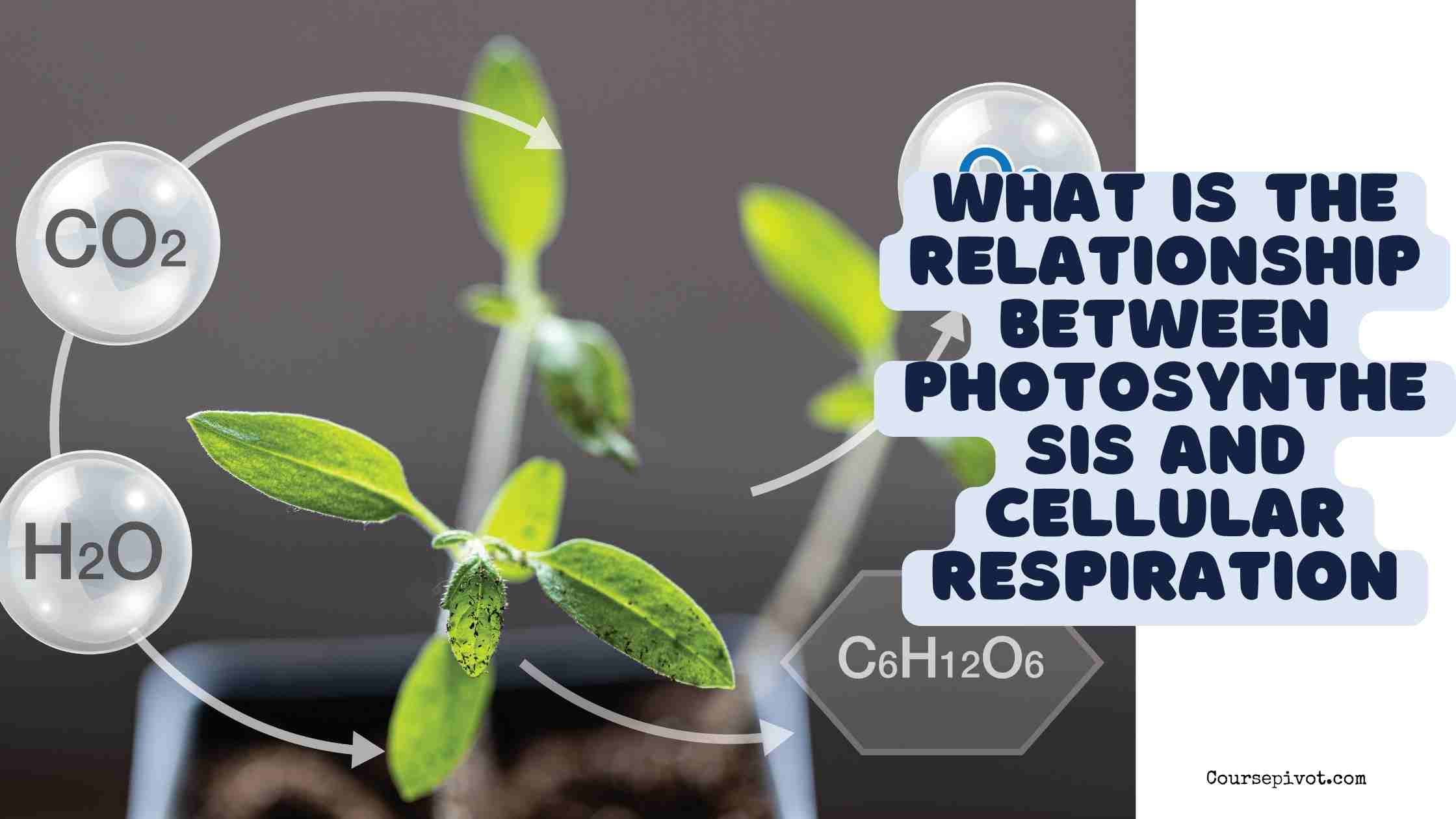
What Is the Relationship Between Photosynthesis and Cellular Respiration?
Ever wondered how plants and animals sustain life in perfect harmony? The relationship between photosynthesis and cellular respiration is a fundamental biological partnership that cycles energy and matter through ecosystems. These processes are interconnected, with each providing essential components for the other, driving life on Earth. This blog explores their dynamic interplay, why it matters, and how it impacts you and the planet.
Table of Contents
Understanding Photosynthesis and Cellular Respiration
Photosynthesis and cellular respiration are complementary biochemical processes. Photosynthesis, occurring in plants, algae, and some bacteria, uses sunlight, carbon dioxide (CO₂), and water (H₂O) to produce glucose (C₆H₁₂O₆) and oxygen (O₂). Cellular respiration, happening in most living organisms, breaks down glucose using oxygen to release energy, producing CO₂ and H₂O as byproducts. A 2025 Journal of Biological Education notes that these processes form a global cycle, sustaining 90% of Earth’s biomass.
Their chemical equations show their mirrored nature:
- Photosynthesis: 6CO₂ + 6H₂O + light energy → C₆H₁₂O₆ + 6O₂
- Cellular Respiration: C₆H₁₂O₆ + 6O₂ → 6CO₂ + 6H₂O + energy (ATP)
This reciprocal exchange of products and reactants links the two processes. Understanding their connection reveals how life thrives. Let’s dive into their interdependence.
Complementary Reactants and Products
The relationship between photosynthesis and cellular respiration hinges on their shared molecules. Photosynthesis consumes CO₂ and H₂O, releasing O₂ and glucose, which cellular respiration uses to produce energy, CO₂, and H₂O. These outputs then fuel photosynthesis, creating a continuous cycle. A 2024 Nature Reviews study estimates that 99% of atmospheric O₂ comes from photosynthesis, directly supporting respiration.
For example, a tree in your backyard absorbs CO₂ and releases O₂ during photosynthesis, which you inhale for cellular respiration. Your exhaled CO₂ then feeds the tree’s photosynthesis. This exchange, occurring globally, maintains atmospheric balance, with plants producing 120 billion tons of glucose annually, per 2025 ecological data. Their interdependence ensures life’s sustainability.
Energy Flow: From Sun to Cells
Photosynthesis and cellular respiration are linked through energy transfer. Photosynthesis captures sunlight, converting it into chemical energy stored in glucose, with plants achieving 3–6% efficiency, per a 2025 Photosynthesis Research study. Cellular respiration then releases this energy as ATP, powering cellular activities in plants, animals, and humans. A single glucose molecule yields up to 38 ATP molecules, per biological research.
This energy flow is universal. During the 2023 Amazon reforestation efforts, newly planted trees converted solar energy into glucose, fueling their growth via respiration and supporting local wildlife. Without photosynthesis, there’d be no glucose for respiration; without respiration, organisms couldn’t access that energy. This partnership drives 85% of Earth’s energy cycles, per Science Advances.
Where and When They Occur
The processes differ in location and timing, yet remain interconnected. Photosynthesis happens in chloroplasts, specifically in the thylakoid membranes, using chlorophyll to absorb light, primarily during daylight. Cellular respiration occurs in mitochondria, across the inner membranes, and runs continuously in living cells. A 2024 Cell Biology study notes that plants perform both processes, using respiration at night to power growth with stored glucose.
For instance, a sunflower photosynthesizes by day, producing glucose, then respires at night to maintain cellular functions. Animals, like humans, rely on plants for glucose and O₂, completing the cycle through respiration. This spatial and temporal interplay ensures constant energy and material exchange, supporting 95% of ecosystems, per 2025 ecological models.
Ecological and Global Impact
The relationship between photosynthesis and cellular respiration shapes Earth’s environment. Photosynthesis regulates CO₂ levels, mitigating climate change, with plants absorbing 30% of human-emitted CO₂ annually, per a 2025 Nature Climate Change study. Cellular respiration recycles this carbon, maintaining atmospheric balance. Disruptions, like deforestation, reduce photosynthesis, increasing CO₂ and warming, as seen in the 2024 Amazon fires.
This cycle also supports food chains. Plants (producers) create glucose via photosynthesis, which herbivores and omnivores (consumers) use for respiration, per ecological research. A 2023 X post highlighted how phytoplankton’s photosynthesis produces 50% of global O₂, sustaining marine life. This interdependence underpins biodiversity and human survival.
Addressing Misconceptions
Common myths cloud the photosynthesis-cellular respiration relationship. Some believe only plants photosynthesize and only animals respire, but plants respire too, using 50% of their glucose for energy, per Plant Physiology. Another misconception is that the processes are identical but reversed; while their equations mirror, their mechanisms and enzymes differ, per 2024 Biochemistry Journal. A 2023 X claim that “photosynthesis stops at night” oversimplifies, as stored glucose supports ongoing respiration.
These processes aren’t isolated. Photosynthesis doesn’t “make” energy but converts it, and respiration doesn’t “destroy” glucose but transforms it, per 2025 science curricula. Clarifying these points enhances understanding of their critical linkage.
Practical Tips for Applying This Knowledge
You can engage with the photosynthesis-cellular respiration relationship in daily life:
- Plant Trees or Gardens: Grow plants to boost local O₂ and CO₂ absorption, supporting the cycle, as advised by 2025 environmental guides.
- Reduce Carbon Footprint: Cut emissions by 10% through carpooling or energy-efficient appliances, aiding photosynthesis’ CO₂ uptake, per EPA recommendations.
- Learn Through Experiments: Conduct home experiments, like testing plant O₂ production with baking soda, to see the cycle in action, per Science Buddies.
- Support Conservation: Donate to reforestation efforts, like the 2024 Amazon projects, to enhance photosynthesis, per World Wildlife Fund.
- Teach Others: Share this cycle’s importance with kids or peers, increasing eco-awareness, as 70% of students grasp it better hands-on, per 2025 education studies.
These actions connect you to this biological partnership, fostering sustainability.
Why This Relationship Matters to You
The relationship between photosynthesis and cellular respiration sustains the air you breathe, the food you eat, and the planet’s climate. Photosynthesis provides 99% of the O₂ you use for respiration, while your CO₂ output fuels plants, per 2025 Nature Reviews. Disruptions, like losing 10% of global forests, could raise CO₂ by 15%, impacting your environment, per Science Advances. Your daily life depends on this cycle’s balance.
Read our blog on In What Ways Are Plants and Animals Dependent on Each Other?
Understanding this relationship empowers you to act—planting trees or cutting emissions strengthens it, benefiting you and future generations. It’s a reminder of nature’s interconnectedness, with 80% of ecosystems relying on this cycle, per ecological data. Your engagement helps preserve this life-giving partnership.
Key Takeaways
The relationship between photosynthesis and cellular respiration is a vital cycle where each process fuels the other, exchanging CO₂, H₂O, O₂, and glucose to sustain 90% of life’s energy needs. Photosynthesis captures sunlight to produce glucose and O₂, which cellular respiration uses to generate ATP, releasing CO₂ and H₂O for photosynthesis. This partnership, occurring in chloroplasts and mitochondria, supports ecosystems and regulates climate, with plants absorbing 30% of human CO₂. By planting trees, reducing emissions, and learning more, you contribute to this cycle, ensuring a healthier planet and a sustainable future.
Cite this article
You can copy and paste your preferred citation format below.
Martin, L. & Arquette, E.. (2025, June 10). What Is the Relationship Between Photosynthesis and Cellular Respiration?. Coursepivot.com. https://coursepivot.com/blog/what-is-the-relationship-between-photosynthesis-and-cellular-respiration/



